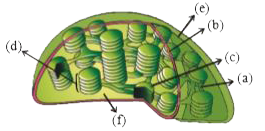Identify A and B.

(i) - Tetanus Toxoid
(ii) - Anti-tetanus serum
(iii) - Diphtheria, pertussis, and tetanus vaccine
(iv) - Antitoxin diphtheria serum
(v) - Bacillus Chalmette-Guerin (BCG) vaccine
AB(i),(iii),(iv)(ii),(v)
AB(i),(ii),(v)(iii),(iv)
AB(i),(ii),(v)(i),(iv)
AB(i),(ii),(v)(ii),(iv)
The correct Answer is:D
Step by step video & image solution for Identify A and B. (i) - Tetanus Toxoid (ii) - Anti-tetanus serum (iii) - Diphtheria, pertussis, and tetanus vaccine (iv) - Antitoxin diphtheria serum (v) - Bacillus Chalmette-Guerin (BCG) vaccine by Biology experts to help you in doubts & scoring excellent marks in Class 12 exams.
Updated on:21/07/2023Similar Questions
Read the following matching carefully :
(i) Artificial active immunity : vaccination
(ii) Natural passive immunity : Anti - tetanus serum (ATS)
(iii) First line of defense : physical barriers
(iv ) Anamnestic responses : Quick and highly intensified response
(V) Graft rejection : Due to cell - mediated immunity (CMI)
How many from the above matching's are correct ?
View SolutionIf a person meets with a road accident, which of the following is administered?
(a) Anti-venom
(b) Tetanus toxoid
(c) Anti-tetanus serum
(d) IgA enriched colostrum
View Solution
Knowledge Check
Read the following statements and select the correct ones.
(i) Vaccine is a preparation (or suspension ) of a dead/attenuated pathogen of a disease which on inoculation ( or injection ) into a healthy person, provides temporary/permanent active immunity by inducing antibodies formation.
(ii) Immunisation is the process by which the body produces antibodies against the vaccine preventable diseases through administration of specific vaccines.
(iii) The principle of immunisation or vaccination is based on the property of 'memory' of the immune system.
iv) If a person is infected with some deadly microbes to which quick immune response is required; in that case, we need to directly inject the performed antibodies or antitoxins e.g., in case of tetanus.A(i) and (ii)B(iii) and (iv)C(i), (ii) and (iii)D(i),(ii),(iii) and (iv)The given figure shows a section of brain. Identify the parts labelled as A,B,C and D and match them with the names (i-vii) given below.
(i)Arachnoid membrane , (ii)Subdural space , (iii)Duramater , (iv)Bone , (v)White matter , (vi)Grey matter , (vii)Piamater
 AABCD(iii)(ii)(vi)(v)BABCD(i)(ii)(iii)(vi)CABCD(iii)(i)(vii)(vi)DABCD(iv)(vii)(i)(ii)
AABCD(iii)(ii)(vi)(v)BABCD(i)(ii)(iii)(vi)CABCD(iii)(i)(vii)(vi)DABCD(iv)(vii)(i)(ii)

Identify a, b, c, d, e and f from the given i, ii, iii,iv, v and vi (i) Stroma
(ii) Granum
(iii)Thylakoid
(iv)Intergranal Thylakoid
(v) Inner membrane
(vi) Outer membrane
View Solution
Identify a, b, c, d, e, f and g from the given words:-
(i) Interdoublet bridge
(ii) Central microtubule
(iii)Radial spoke
(iv) Plasma membrane
(v) Peripheral microtubule
(vi) Cell wall
(vii) Central bridge
(viii) Central sheath

View SolutionSee Fig.3.14. and write the following:(i) The coordinates of B.(ii) The coordinates of C.(iii) The point identified by the coordinates (−3, −5).(iv) The point identified by the coordinates (2, −4). (v) The abscissa of the point D. (vi) The ordinate of the points H. (vii) The coordinates of the points L. (viii) The coordinates of the point M.

View SolutionMatch the following:
(a) Retting of fibres (Column I) (i) Clostridium tetani (Column II)
(b) Tetanus (Column I) (ii) Streptococcus lactis (Column II)
(c) Curing of tobacco leaves(Column I) (ii) Pseudomonas putida (Column II)
(d) Cheese and yogurt production (column I) (iv) Clostridium perfringens (Column II)
(e) Petroleum pollution control (Column I) (v) Bacillus megatherium (Column II)
View SolutionCarefully observe the figure and then answer the questions that follow :
 (i) Identify the ancestors of humans shown in the figure.
(i) Identify the ancestors of humans shown in the figure.
(ii) Write any two characters of each A and C.
(iii) What is the cranial capacity of B ?
(iv) What is the height of D ?
(v) What type of teeth does D had ?
View SolutionGiven figure represents longitudinal section of a monocotyledonous embryo.
Identify the parts labelled as A,B, C and D from the list (i-vii) and select the correct option

(i) Scutellum
(ii) Coleoptile
(iii) Shoot apex
(iv) Epiblast
(v) Radicle
(vi) Root Cap
(vii) Colerhiza
View Solution
